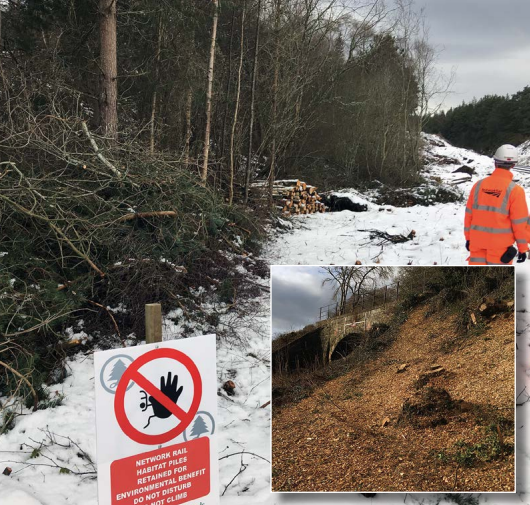We’re working hard to improve the way we manage biodiversity around the railway.
Our Biodiversity Action Plan, published last year, is about land by the railway that’s managed sustainably for safety, performance, the environment, our customers and our neighbours who live by the railway.
It outlines our ambitions for our biodiversity assets, and how we intend to protect, manage and enhance their condition over our current five-year funding cycle and beyond.
But what does managing biodiversity around our land mean?
Here are seven examples …
Four hectares of undisturbed habitat
Last week, Trackside Tara, one of our most senior engineers, shared her passion for a big biodiversity project near Kettering in Northamptonshire.
The four-hectare site in Finedon will become a dedicated site to protect wildlife for years to come – and we’ve committed to looking after it for 30 years.
We’ve worked with contractor Amey and environmental specialist Freshwater Habitats Trust to transform the site from a temporary work compound into an undisturbed wildlife habitat.
We’d used it during electrification work as part of the £1.5bn upgrade to the Midland Main Line, which runs through Northamptonshire.
The land will not be open to the public, meaning the animals and biodiversity will remain undisturbed and able to thrive.
It will contain ponds – which will be the right habitat for great crested newts – as well as grassland, wetland areas and open woodland. Trees and plants will attract birds, butterflies, and bees.
A new woodland for Gloucestershire
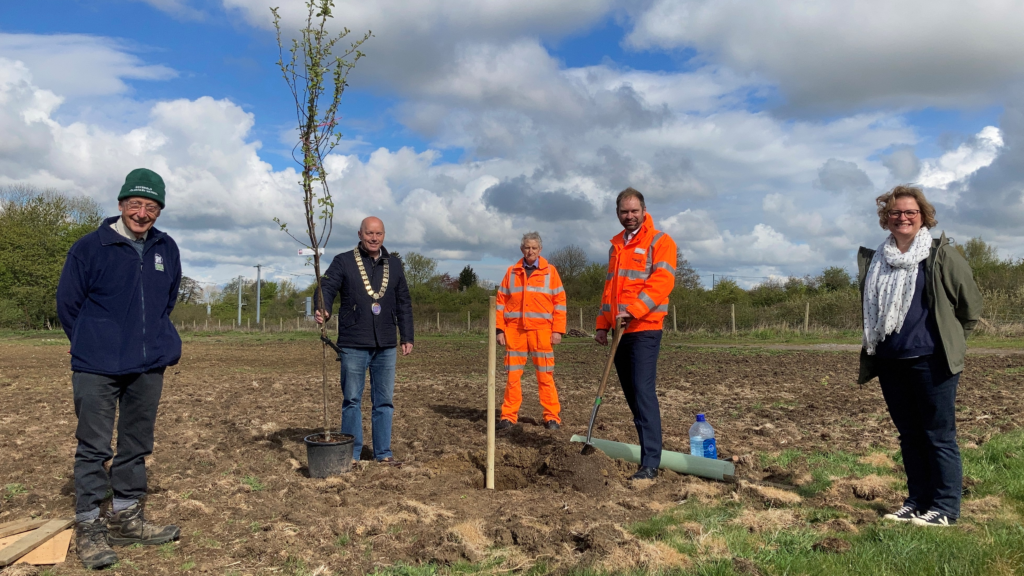
In May, we shared how residents in Old Sodbury, South Gloucestershire, would benefit from a new, five-hectare woodland.
We sold the land to Sodbury Town Council for just £1 as a thank you after we spent years carrying out work as part of the electrification of the Great Western Main Line between London and Cardiff.
The land itself will now become a woodland, with volunteers planting trees and maintaining it.
We originally bought the land next to railway at Old Sodbury to replace an aqueduct, which was too low for the overhead line equipment (OLE) needed to power electric trains.
Working with the Environment Agency, we created a new stretch of river and a flood attenuation pond. We then planted the area to slow the river flow and protect biodiversity.
Mike Franklin, an environment specialist at Network Rail, worked with the local community and town councillors to realise their ambition of creating a woodland, which includes an orchard and a nuttery, in the area around the river.
Tech improves thousands of miles
Scientists are using cutting-edge technology along our 20,000-mile railway in January as part of our action plan for sustainable vegetation management.
The UK Centre for Ecology & Hydrology (UKCEH) used high-resolution imagery from satellites and aircraft to produce a detailed national map of all the habitats found alongside the railway.
By combining this information with millions of records of species, UKCEH has predicted what animals and plants were likely to be present in these habitats, which grasslands, heathlands and woodland.
This information will ensure our workers and contractors are aware of the possible presence of rare species when carrying out vegetation management. It will also inform our conservation measures to increase biodiversity and provide a baseline for monitoring future trends.
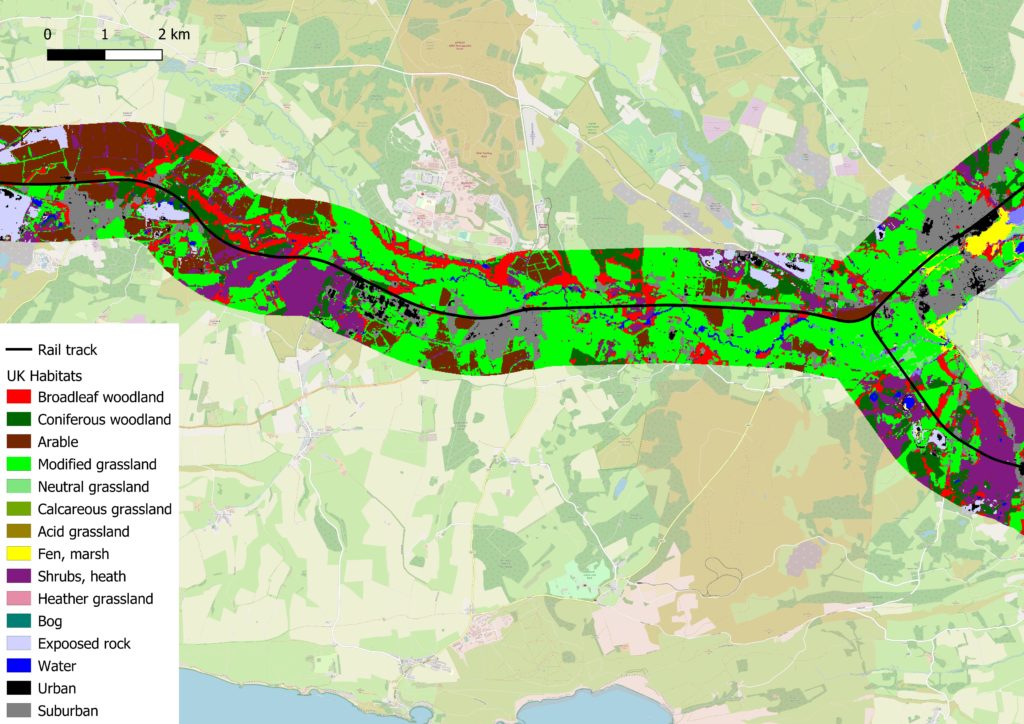
Improving nesting bird training
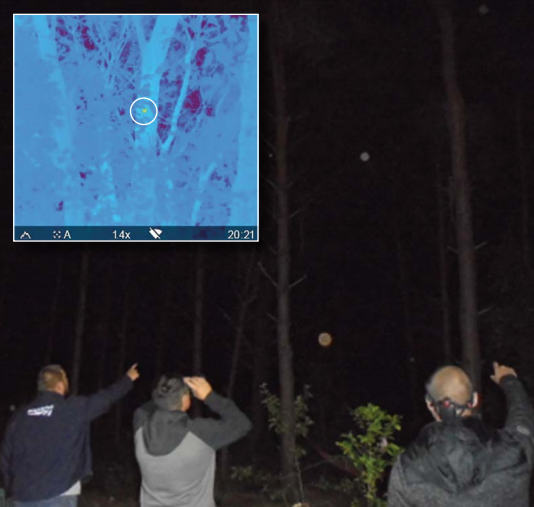
We sometimes do vegetation management at night to minimise disruption to your train services.
This has required improvements in our standard procedure regarding nesting birds.
In spring last year, we trained staff in a woodland in Shropshire during the early evening and night.
This simulated the type of habitats that workers may encounter on the railway lineside.
The training also enhanced skills in the use of thermal imaging scopes to locate nesting birds at night. The trainees identified several species, including a great spotted woodpecker nesting within a tree hollow.
Big dig for Merseyrail
Railway workers and residents joined forces in March to plant more than 520 trees and hedgerow plants near Port Sunlight railway station on the Wirral.
The planting was part of a major improvement of the Merseyrail network, involving upgraded electricity supplies for new trains.
This created an opportunity to plant a variety of trees along the railway embankment in partnership with The Tree Council and contractor VolkerRail.
Hundreds of plants including silver birch, field maple, hawthorn and dogwood hedges are now in place to provide habitats for wildlife.
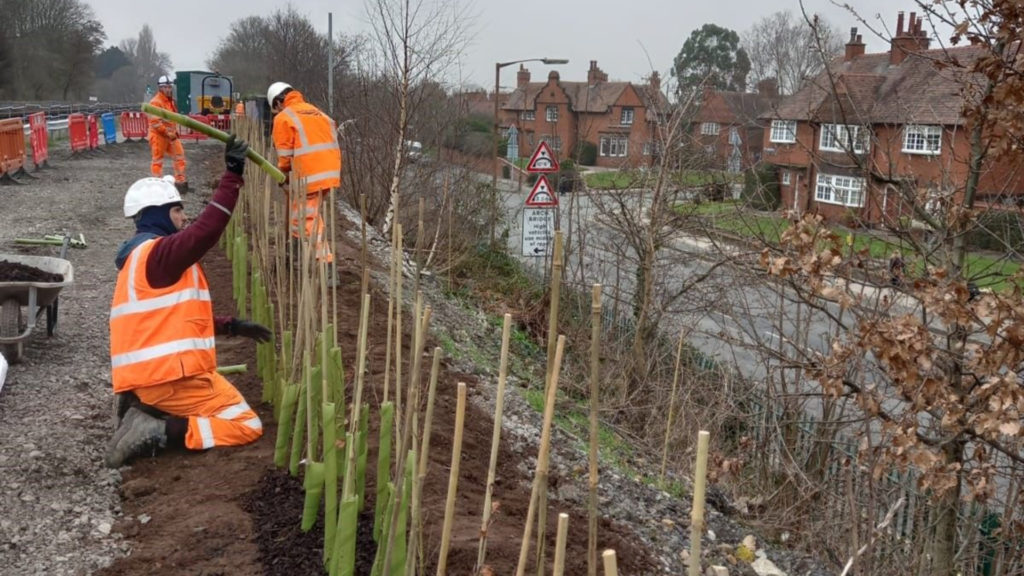
Protecting rare species
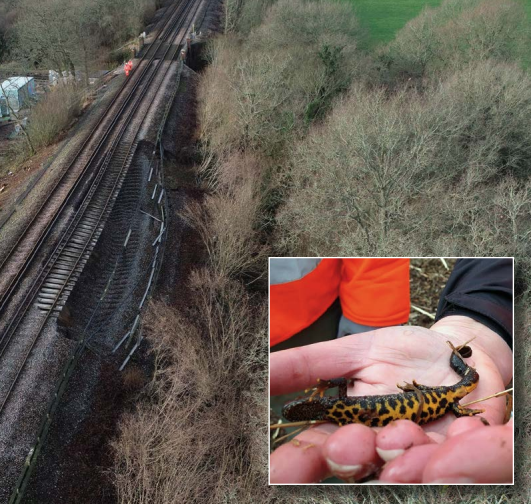
During the winter of 2019 to 2020, we rebuilt embankments in Cookspond in Sussex and Edenbridge in Kent that had failed after diverse weather.
Detailed ecological surveys showed there were protected species at each site – great crested newts at Edenbridge and dormice and bats at Cookspond.
Our environmental specialists worked closely with Natural England and local authorities to ensure the engineering work caused minimal disturbance to the protected species.
We also ensured the relocation of the newts found at Edenbridge.
Timber harvesting for habitats
It’s normal practice in the forestry sector to chip trees alongside the railway if they’re not harvested for timber.
This is because of the cost of removing woody material from a site. The chips are then spread on the cleared ground but this tends to smother the re-growth of plants so it’s not great for biodiversity.
In Scotland, we talked with local residents and decided to store this material as habitat piles. They look more natural and support more species because they break down slowly.
They make great refuges and hibernation habitats for invertebrates, amphibians and reptiles. Red squirrels can use them for storing food and birds can forage and nest on them.
This has been a big step change for our vegetation supply chain but it’s also positive for biodiversity.
